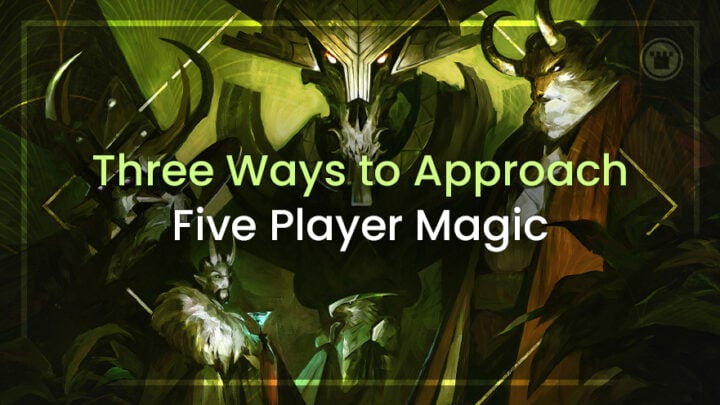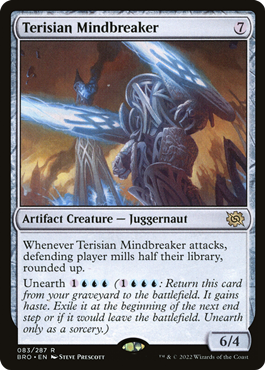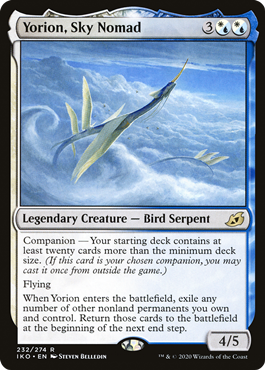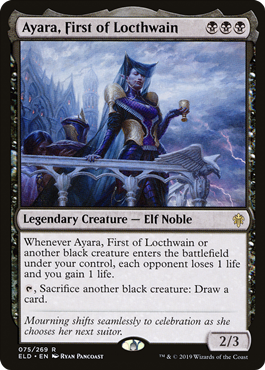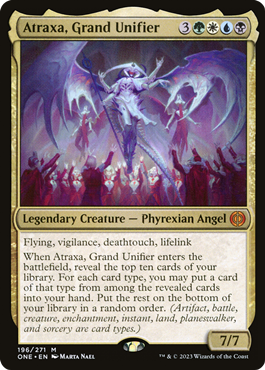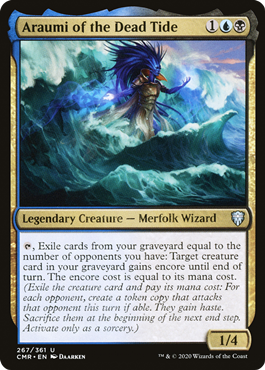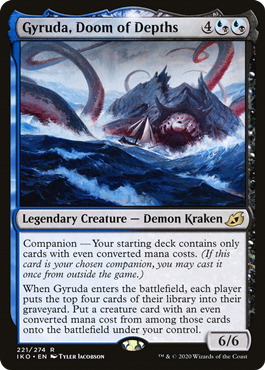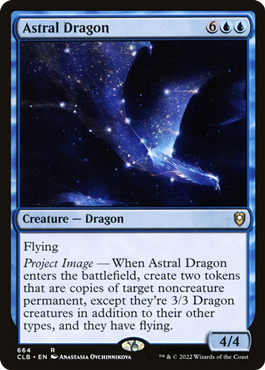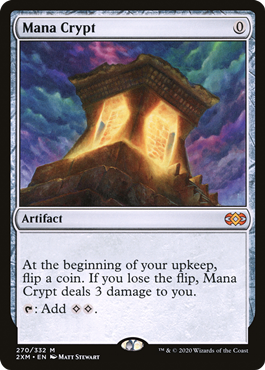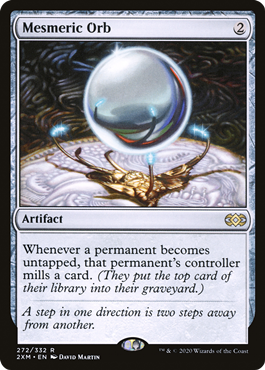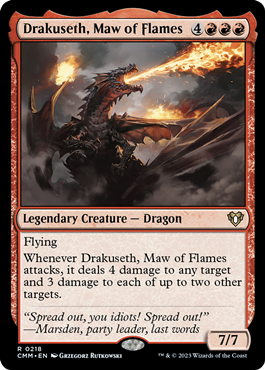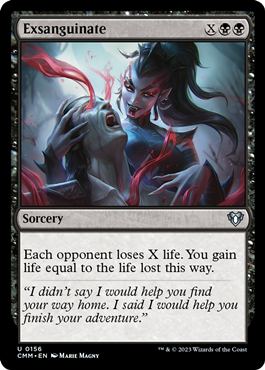We’ve all tried rallying friends to play some Commander and had two people respond at the same time for the fourth spot. Or it’s the day of a six-person draft, and one player’s commitment beforehand goes long, causing them to bow out. Either way, you’re left with that awkward number of five player Magic.
Commander games can already run long, depending on the power level, and adding a fifth person could easily push a game by hours. Traditional draft, moreover, usually features an even number of players in head-to-head matches, as does Two-Headed Giant.
But sometimes, the obstacle is the way. I proclaimed in my three-person-Magic article that if there are people willing to play, then everyone ought and should be able to sling their spells. In this spirit, let’s remember that the back of any Magic card doubles as our map to five-player Magic: Star, aka Pentagram or Five-Point, a five-player gameplay mode.
The beauty of Star lies in playing popular formats that you’d play anyway, just seated in its five-person formation. In trying it out myself, my playgroup and I experimented with Draft, Commander and a special iteration of this mode that hearkens to its inception.
How to Play
For the uninitiated, Star is a five-player format in which five players sit in a five-pointed formation (hence “star”). Each participant plays as an ally to the two players at either side of them and against the two players across from them.
Here’s where the back of a Magic card has influenced the game setup. Traditionally, each player would construct a different mono color deck for each color in MTG and sit in the same WUBRG formation of colors seen on the game’s card-backs.
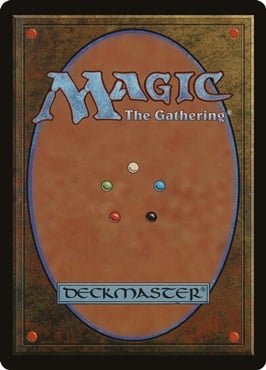
This setup predisposed each mono color deck to play against its enemy colors — White versus Black and Red, Blue versus Red and Green, Black versus Green and White, Red versus White and Blue, and Green versus Blue and Black. Allies for each color look like Shards of Alara. Meanwhile, the first player whose two enemies are knocked out of the game wins.
Unless agreed upon otherwise, players may only attack their enemies, but global effects such as a board wipe impact each player at the table. Players may also target their allies’ spells and permanents as it suits their respective gambits to win.
The wrinkle of allyship may sometimes prompt you to destroy an oppressive piece of an ally’s board for a bit of tough love to help you keep up with the Joneses. In one game we played, someone killed his ally’s Terisian Mindbreaker to give himself a better shot at winning. It’s also possible for two players to win at once when each of their enemies are eliminated — but more on this below.
Other than that, non-Commander games start at 20 life, but you can adjust this as you see fit. My playgroup also agreed upon a couple other tweaks.
First, since it’s multiplayer, we decided that each person draws a card on their first turn, regardless of whether they go first. Additionally, while the White player usually goes first in monocolor games (per WUBRG) we decided to roll dice and leave it to chance.
We let each format direct us on how to build our decks from there.
Draft
In the interest of making sure we had enough resources at our disposal, our five-player pod opted to draft four March of the Machine packs apiece instead of three. This decision may have given us more than we needed for scaling to Star’s gameplay schema, but we wanted to be safe rather than sorry.
This turned out to be a good decision. Removal in Draft comes at a premium, and since we were each facing down an additional opponent, I was grateful for more options. This fourth pack also prompted us to build 60-card decks. While one player did so because he ran Yorion, Sky Nomad as his companion, we followed suit so as to buttress our decks for a longer game.
Then we dove in. The result?
If you’ve ever wanted to procure deep, grindy Magic with abundant board states akin to Commander Limited drafts — but with any given draft set — then Star Draft is for you. The dynamic of two enemies with each one of your allies as one of their enemies tilts strategies toward the long game. With the game lasting a good four hours, it felt like an über-casual Commander game that reclaimed the joy of playing jank in multiplayer.
Midrange card evaluation burgeons in Star Draft. My instinct at first said to go wide, so I drafted Red and White cards that made tokens after selecting a P1P1 Archangel Elspeth. Given the reduced speed of this multiplayer setup, however, the gravity of other players’ bombs (namely nasty, splashy creatures) warped my conventional archetype-conscious Draft wisdom.
My life total had depleted by the time I could deploy my own bombs (I blame the dang Stompy player across from me), but other players found great success. One competitor sapped his enemies’ life totals in an aristocrats-attrition strategy, which made him a more palpable threat after starting with 20 life.
Leveraging a serendipitous “Multiverse Legends” pull of Ayara, First of Locthwain in concert with Grafted Butcher, his white-black, Phyrexian-filled build put the pressure on me and his other enemy.
The last two standing duked it out between blue-red Control and 5c Yorion. The 5c player seemed to have the upper hand after casting Atraxa, Grand Unifier. But with flyers pecking in over a truly packed boardstate and a hardy Faerie Mastermind conducting the Value Town Express, the Control player eked out the win after a timely See Double copied Atraxa.
Regarding 60-card decks: On the one hand, a couple of us felt like 50 cards would have shepherded us to finding our more urgently needed cards throughout the game. That said, the Faerie Mastermind–playing Control player stole the “W” with four cards left in his Library.
We nevertheless found the most joy in how card-abundant and consequently swingy these games turned out. Ultimately, we discovered a gameplay wormhole from Draft to Commander.
Commander
The lessons we took with us to Star Commander included seat randomization and collaborating with our allies more. In order to keep the game from running too long, we set starting life totals at 30. We wanted to scale the amount of work we had before us to the number of enemies per person while still keeping Commander Damage on the table.
Frankly, Star Commander feels mostly like, well, Commander — which is a good thing. Where Star Draft fomented more pulled-out perspectives on how to tailor our strategies, the Star formation locked our Commander gameplay in step as we collaborated with our allies against our common enemies. Starting with 30 life made our respective, dual cross-table standoffs progress linearly and didn’t drag out.
Having allies feels like Star’s most pronounced dynamic when playing Commander. Despite the ease with which Commander ports into this setup, you begin to notice phrases such as “each opponent” versus “each player” a lot more.
For example, playing my Araumi of the Dead Tide deck, I held on to a Fleshbag Marauder so as not to cause my allies to sac any of their dudes. I later drew a Massacre Wurm, which I used instead in order to board wipe my enemies alone.
My ally to the right was running Gyruda, Doom of Depths, whose repeated ETBs facilitated ample reanimation selection for my graveyard deck. I also wouldn’t have minded if he would’ve reanimated one of my creatures on his board, since we shared a common enemy.
On the other side of the coin, knocking out one of your opponents but not the other gives your allies a huge edge. Given Commander’s inherent brokenness, any player’s capacity to win out of nowhere skyrockets once they have only one opponent to contend with — an opponent who still may have two enemies on their plate at that.
The Gyruda player first eliminated our common enemy with some Astral Dragon–made, 3/3 Dragon Islands. On his next turn, he cast Toxic Deluge for three, clearing my ally’s Urtet, Remnant of Memnarch and flanking Myr for the alpha strike and win.
Until there’s a dead-man-standing situation — where one player of the three remaining is the enemy of the two others — Star nearly bypasses Archenemy situations. The equally distributed tension ’round the table also made me more judicious with my attacks and removal spells rather than “going for it” to burst ahead as I would in free-for-all, four-player Commander. And having allies in a perpetual state of enmity with each other imparts to Commander an inimitable set of politics I haven’t found in other EDH situations.
60-Card Mono Color Singleton
We also agreed to honor the origins of Star by playing a mono color deck, each. To mix up our Constructed palettes, we went for 60-card singleton decks, no Commanders and would first start at 20 life per player. I chose red.
As we got brewing, questions arose regarding how to temper our decks’ power levels. We weighed allowing cards such as Mana Crypt, whose raw power we acknowledged yet queried on account of its drawback of being randomly shocked after starting at 20 life. We eventually landed on using the point system of fringe format 7-Point Highlander, since its point system was curated for 60-card decks. From there, in homage to the five-pointed dimensions of Star, we capped our points at 5 points total per deck.
Of the pointed cards, I only included Sol Ring. I wanted to make space for as many angry red dragons as possible — and it ruled.
Just as Richard Garfield intended, we slugged it out against our enemy colors. Our first monocolor Star game saw the white player with an early Luminarch Ascension that dominated the game. Yet it was my green ally who overtook both white and blue to steal the dub.
Despite being host to one color each, these Constructed decks packed a lot of punch, making our first mono color game feel like it went by too fast for us to truly savor its simple beauty. For the next one, we tried 30 life — the sweet spot, we found.
Twenty life led to incisive combat that kicked an opponent’s leg out and left them fatally vulnerable on the next attack. But 30 made room for a bit more recuperation time as the table’s life totals fell more evenly.
It also gave the blue player a bit more space to flourish his mill strategy, nearly killing the table — including his allies. With a Mirrormade-copied Mesmeric Orb plus the original on the battlefield, each other player was milling an inordinate amount of cards at each untap step. I milled 14 at one point and ended the game with four cards left in my Library.
Once my black-playing ally disposed of white’s irksome Sun Titan, I could finally deploy my dragons to kill the Banisher Priest that he kept reanimating to recursively remove my Drakuseth, Maw of Flames.
With Dragon Tempest and Scourge of Valkas online, I was able to burn blue out and strike white’s life total to the danger zone. A clutch Exsanguinate saw black take white and green out at once, which led to us co-winning the game.
On paper, a co-win may read as underwhelming. On the contrary, the continual collaboration with your allies stokes a convivial spirit. I was happy to co-win with my brother in Rakdos! The fact that you share any given ally with an enemy adds a sense of narrative tension, à la role-playing games like The Resistance and Avalon.
In the same game, green and I conspired for me to Lightning Bolt blue’s Terisian Mindbreaker once green blocked with a Fyndhorn Elves. Overall, one-on-one collaborations with someone who (mostly) won’t turn on you elevate Star par excellence.
End Step
Other Star iterations see two-color decks of each allied color pair battling it out in the same WUBRG color formation. I’m positive you could also extrapolate it to Magic’s three-color shards. The Star wiki even spells out how to play seven-person Star. I’m trying to decide if I’m crazy enough to try it. We’ll see!
How do you handle five-player games of Magic? Let me know on Twitter and Instagram!

Alexander is an MTG graveyard kid with degenerate aspirations. When he’s not playing Commander, cubing, drafting or squeezing in a Pioneer or Modern match here and there, he might be found writing fiction or playing in his punk band, Filth Lords. Besides Magic, he’s also a freelance A&E journalist

